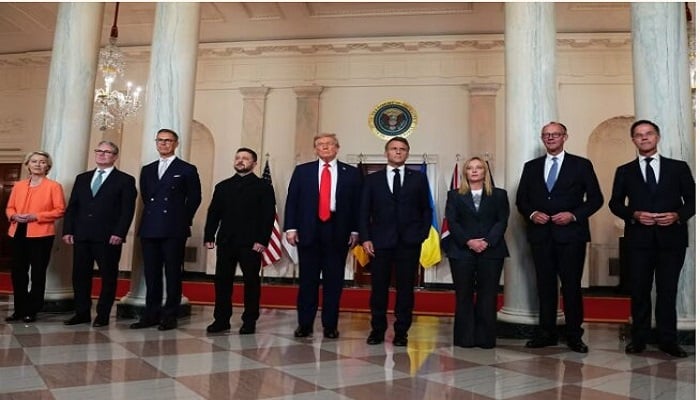PNN – The US President’s plan is not just a peace proposal to end the war in Ukraine; it is also an attempt to redefine the balance of power in Europe and return to the logic of spheres of influence.
The draft that the Trump administration presented to Kiev on November 20, 2025, is not simply a ceasefire proposal; it is a document that directly challenges the European security architecture and even the post-Cold War international order. This plan, with 28 specific points, not only determines how the war in Ukraine will end, but also changes the power equations between the United States, Russia, and Europe. The main question is what consequences will the implementation of such a plan have for the future of Europe, the position of NATO, transatlantic relations, and the world order?
Returning to the concept of “spheres of influence” in the 21st century
One of the most important strategic consequences of this document is the revival of the concept of “spheres of influence,” a concept that was thought to have been eliminated from world diplomatic literature after the collapse of the Soviet Union. By consolidating Russian control over Crimea and significant parts of Donbas, as well as demilitarizing Ukraine, Moscow has succeeded in creating a real buffer zone on its western borders for the first time since 1991.
This situation puts not only Ukraine, but also Moldova, Georgia, and even the Baltic states in a more fragile position, because it shows that changing borders is still possible and may ultimately be accepted by the great powers.
At a macro level, this trend is a slow return to the logic of the Cold War era; a period in which great powers had political and security dominance over their areas of influence.
Read more:
German Chancellor: New Ukraine peace plan may not be approved before Thursday
NATO’s credibility crisis and the rift in transatlantic relations
The implementation of Trump’s 28-point plan could be the biggest strategic blow to NATO’s credibility since 1949. While the Ukraine crisis is considered Europe’s biggest security challenge since the Cold War, NATO has failed to effectively defend its founding principles, especially the principle of “collective defense.” This is a serious warning for countries like Poland and the Baltic members that have always relied on “American security guarantees.”
In the long term, Eastern European countries are likely to move towards developing independent defense capabilities or even consider limited nuclear deterrence options, an issue that Poland has previously raised. This trend could mark the beginning of a practical breakdown of the alliance between Europe and the United States, which has been a mainstay of Western security for decades.
Europe: From Actor to Spectator
Europe’s absence from the process of drafting and presenting this document sends a very important message for the future of the continent’s role in global politics. By negotiating directly with Moscow and imposing the terms of the plan on Kiev, Washington effectively marginalized Europe. This situation is reminiscent of the Suez Crisis of 1956, when the US and the Soviet Union made decisions without regard to the interests of London and Paris. The difference today is that Europe is not a declining colonial power, but a major hub of the global economy with a very large defense budget.
Russia: A big victory with new restrictions
From Moscow’s perspective, the plan is a historic success. By consolidating its battlefield gains, demilitarizing Ukraine, and preventing NATO expansion to its borders, Russia would achieve one of its most important security goals. Moscow’s potential return to the ranks of the world’s major economic and political powers is another important advantage that the Kremlin sees as a strategic victory.
Possible scenarios in the next five years
Scenario 1: Acceptance of the plan with limited amendments: In this scenario, which is estimated at about 35 percent, Ukraine accepts the plan under US pressure and a long-term ceasefire is established. Europe will also be forced to increase its defense budgets and the process of creating an independent
The second scenario is a political crisis in Kiev: the probability of this scenario occurring is about 40%. In this case, the Ukrainian government, under external pressure, accepts the plan, but society rejects it. This could lead to the fall of the Zelensky government and the rise of nationalist forces. As a result, the war will continue, but its intensity will decrease.
The third scenario, rejection of the plan and reduction of US aid: This scenario has a probability of occurring of about 25%. If Kiev does not accept the plan, the US could reduce its military aid. In this situation, Ukraine would be forced to return to direct talks with Russia and perhaps accept more unfavorable conditions.

